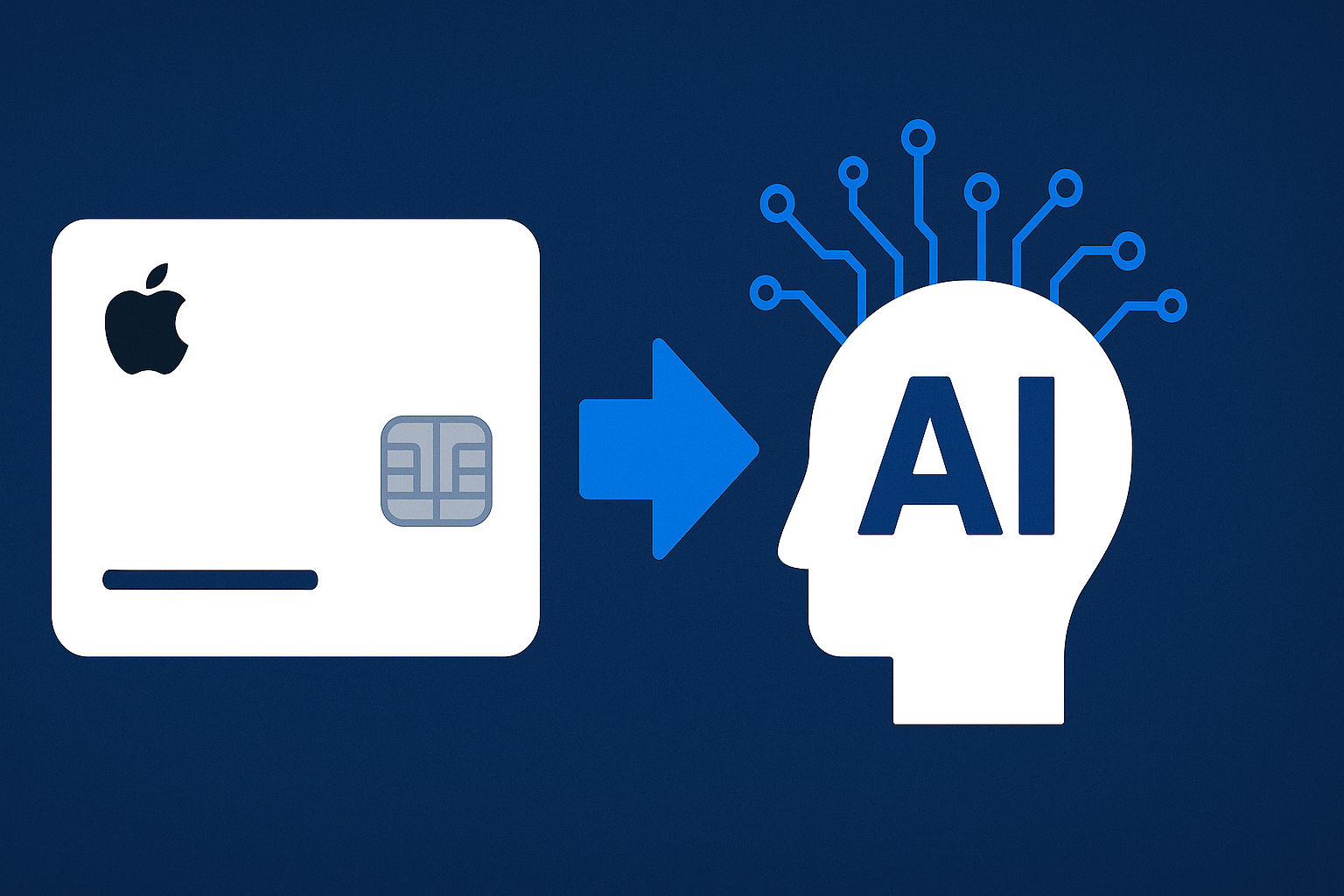When Algorithms Cross the Line: The Apple Card Scandal
In 2019, the Apple Card made headlines not for its sleek design or user experience, but for allegations of algorithmic bias. Customers began sharing stories that revealed a troubling pattern. Women were receiving significantly lower credit limits than men, even when their financial profiles were similar or stronger. One high-profile case came from a software developer whose wife, with a higher credit score, was approved for far less credit than he was.
The backlash was immediate. Social media amplified the outrage, prompting New York’s Department of Financial Services to launch an investigation into Goldman Sachs, Apple’s banking partner for the card. While the company denied intentional bias, the controversy brought intense scrutiny to the opaque algorithms behind automated credit decisions.
This incident became a symbol of a larger issue within the fintech world. AI systems, while efficient and scalable, can absorb and reinforce the biases in the data they are trained on. In the Apple Card case, the exact workings of the model remained undisclosed, raising alarms about the lack of transparency in financial AI applications.
The Apple Card scandal was more than a one-off misstep. It exposed the urgent need to examine how AI operates in critical sectors like finance and how companies respond when their technology falls short.
Data Knows Best? How AI Really Evaluates Credit
AI systems used in credit evaluation are designed to analyze massive amounts of data to make decisions faster and more consistently than human agents. These systems assess factors such as income, credit history, payment behavior, and sometimes even less obvious metrics like purchasing patterns or browser type. The goal is to calculate risk in a way that predicts a borrower’s ability to repay.
The challenge lies in what data gets selected, how it is weighted, and whether it reflects historical inequalities. When data sets reflect years of systemic bias, even the most advanced algorithms can replicate those patterns. A model might determine that certain employment types, zip codes, or financial behaviors are high risk, without understanding the societal context behind those correlations.
AI credit scoring also introduces complexity that is difficult to interpret. These models, particularly those using deep learning, often function as black boxes. Lenders may not be able to fully explain why a certain score was given or why one applicant was approved over another. This lack of transparency poses significant challenges for consumers and regulators who want accountability.
Understanding how AI makes decisions is essential for building fair financial systems. Without visibility into how models process and prioritize data, it is nearly impossible to detect and correct unfair outcomes.
Bias by Design: Where the System Fails Fairness
AI systems do not develop values on their own. They learn from data, and when that data is rooted in real-world inequalities, bias becomes part of the model. In financial services, this means an AI might learn to favor applicants from certain demographics while disadvantaging others, even when the intent is neutrality.
The Apple Card case raised questions about whether automated decisions could be fair if the training data itself was flawed. Even well-designed algorithms can produce skewed outcomes if the data reflects historic gender disparities in income, credit access, or asset ownership. In this context, the model does not discriminate maliciously. It simply mirrors the patterns it has observed.
Another concern is the structure of the models. Developers often optimize AI systems for performance metrics like approval rate or risk score accuracy. These goals do not always align with fairness or equality. Without explicit checks and balances, systems can drift toward outcomes that benefit institutions while creating disadvantage for certain groups of users.
Bias in AI is not always visible to end users or even to the teams that deploy these models, it often requires deep audits, ethical review, and multidisciplinary oversight to detect. The financial industry must invest in these efforts to ensure that progress in automation does not come at the cost of social equity.
Who’s Watching the Code? Regulation and Public Backlash
The Apple Card controversy caught the attention of regulators, consumer advocates, and the media, not just because of the alleged bias, but because of the difficulty in proving or disproving it. The lack of transparency surrounding the algorithm’s decision-making process made it nearly impossible for consumers to challenge outcomes or understand the rationale behind them.
In response, the New York Department of Financial Services launched an investigation into Goldman Sachs. The probe aimed to determine whether the algorithm violated state laws by discriminating against applicants based on gender. Although the investigation found no intentional wrongdoing, it underscored the growing regulatory challenge posed by AI in finance. Laws built around human decision-making often fall short when applied to automated systems that learn and evolve continuously.
Public backlash was swift. Consumers voiced concern about handing over critical financial decisions to systems they could not inspect or question. For fintech companies, this moment signaled a warning. Trust is built solely on innovation or performance and also relies on openness, accountability, and ethical design.
The regulatory landscape is now shifting. Lawmakers and financial authorities are calling for clearer standards around explainability, auditability, and fairness in AI. Companies that fail to prepare for these demands risk facing legal consequences and lasting reputational damage.
Rebuilding Trust: What Ethical AI in Finance Should Look Like
Rebuilding public trust in financial AI requires more than technical refinement. It demands a fundamental shift in how these systems are developed, deployed, and evaluated. Transparency must become a core principle, not a feature added after deployment. Consumers need to know how decisions are made and what factors influence their outcomes.
One key step is adopting explainable AI models. These systems are built to allow human users to understand and interpret how the model arrives at a decision. While this may reduce some of the model’s predictive complexity, it increases accountability and supports fair treatment. Financial institutions can no longer afford to hide behind proprietary algorithms when those algorithms affect people’s financial lives.
Human oversight is another critical component. Ethical AI requires governance structures that include cross-functional teams as data scientists, ethicists, legal experts, and consumer advocates who can evaluate decisions and intervene when problems arise. Bias testing, fairness audits, and inclusive data practices should be standard in any model development lifecycle.
Finally, companies must take responsibility for outcomes, not just intent. If a model produces discriminatory results, the burden of correction lies with the organization that uses it. Ethical AI in finance is a strategic imperative that will define the reputation and success of tomorrow’s fintech leaders.
FinTech’s Reckoning: Innovate Responsibly or Be Regulated
The Apple Card incident was a signal that the fintech industry must confront the ethical dimensions of its most powerful tools. As artificial intelligence becomes more embedded in financial decision-making, the pressure to ensure fairness, transparency, and accountability will only intensify.
Companies that treat ethics as a barrier to innovation will find themselves outpaced by those who see it as a foundation for sustainable growth. Ethical AI is about building systems that reflect the values of inclusion, responsibility, and respect for individuals. These systems do not slow progress. They make it trustworthy.
The future of fintech will be shaped by how well organizations respond to this moment. Customers are demanding answers. Regulators are tightening their scrutiny. Investors are looking for revenue and resilience too. The choices made today will determine whether AI continues to serve as a force for progress or becomes a liability.
Every algorithm deployed carries the weight of public trust. Fintech companies must prove that they are ready to earn that trust. The question is no longer whether AI belongs in finance. It is whether finance is prepared to use AI in a way that meets the moment and respects the people it serves.
Ressources:
- AI in Fintech: Regulations, Opportunities, Ethical Imperatives – Forbes
- Legal Transparency in AI Finance: Facing the Accountability Dilemma – Reuters
- Digital Analytics Insights – H-in-Q



